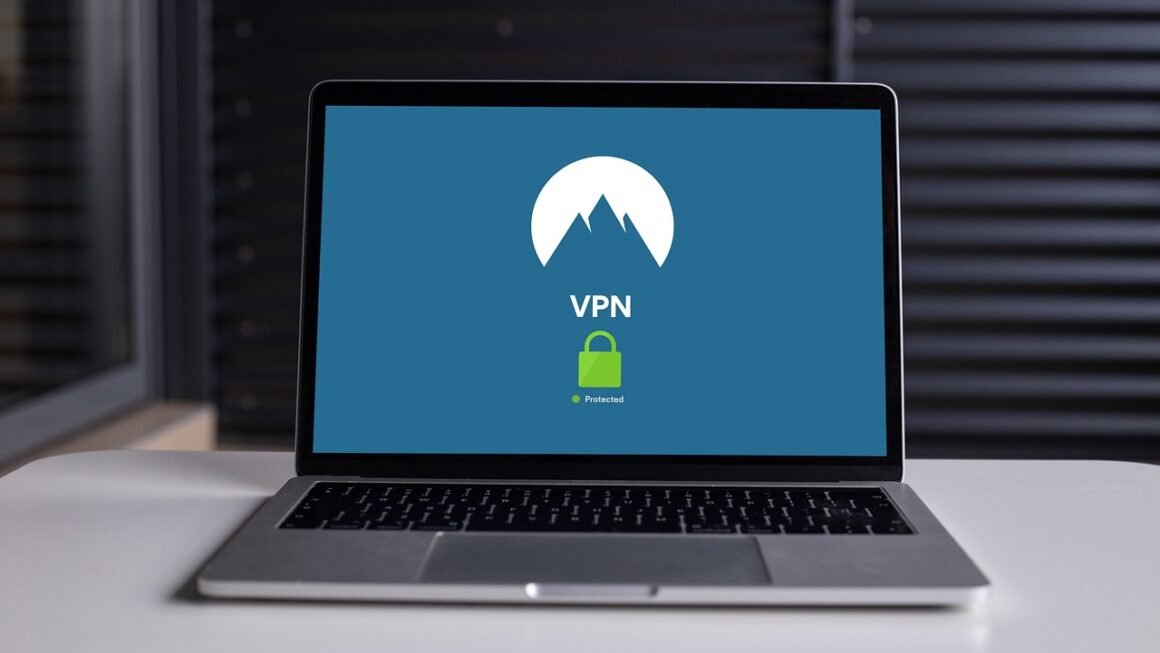It’s a digital reality: Your online life, from banking and shopping to social media and email, relies on passwords. They are the first line of defense against unauthorized access to your personal information. In today’s landscape of increasingly sophisticated cyber threats, understanding how to create and manage strong passwords is not just a suggestion, it’s a necessity. This guide will delve into the nuances of robust password protection, providing you with the knowledge and tools to safeguard your online identity.
Understanding the Importance of Strong Passwords
The Risks of Weak Passwords
Weak passwords are like leaving your front door unlocked. They offer easy entry for hackers looking to steal your data, compromise your accounts, and potentially inflict financial or reputational damage. Here are some common risks associated with using weak passwords:
- Account Takeover: Hackers can gain control of your accounts and use them for malicious purposes, such as sending spam, spreading malware, or making unauthorized purchases.
- Identity Theft: Stolen credentials can be used to impersonate you, opening fraudulent accounts, applying for loans, or even committing crimes in your name.
- Data Breaches: Weak passwords can serve as entry points into larger corporate networks, potentially exposing sensitive data of thousands or millions of users.
- Financial Loss: Hackers can access your bank accounts, credit cards, and other financial information, leading to direct monetary losses.
Statistics on Password Security
The numbers paint a clear picture: poor password habits are widespread.
- According to various studies, “123456” and “password” consistently rank among the most frequently used passwords, despite their obvious vulnerability.
- Data breach investigations reveal that a significant percentage of breaches involve compromised credentials, highlighting the crucial role of password security.
- Many people reuse the same password across multiple accounts, increasing the risk that a single breach can compromise their entire online presence. A recent study by Google found that 52% of people reuse passwords across multiple accounts.
- Actionable Takeaway: Recognize the real and significant dangers of weak passwords and commit to improving your password security practices.
Creating Strong and Unique Passwords
Length and Complexity
The foundation of a strong password lies in its length and complexity. Avoid using common words, names, or dates that can be easily guessed or found in dictionaries.
- Minimum Length: Aim for at least 12 characters. Longer passwords are exponentially harder to crack. Experts often recommend 16+ characters.
- Character Variety: Use a mix of uppercase and lowercase letters, numbers, and symbols (e.g., !@#$%^&).
- Randomness: Avoid predictable patterns or sequences (e.g., “qwerty” or “123456”).
- Example: Instead of “MyDogRover123”, try something like “j$9Lp@m4T!xZ2w”.
Password Generators
Password generators are tools that automatically create strong and random passwords for you. They are an excellent way to ensure that your passwords meet the length and complexity requirements. Many password managers include built-in password generators.
- Benefits:
Generates truly random passwords that are difficult to guess.
Saves time and effort compared to manually creating passwords.
Ensures passwords meet recommended security standards.
- Example: Most browsers and password managers have built-in options. You can also use websites like LastPass, 1Password or Norton Password Generator.
Avoiding Common Mistakes
- Don’t Use Personal Information: Avoid using your name, birthday, address, or other easily accessible personal information.
- Don’t Use Dictionary Words: Hackers use dictionary attacks to guess passwords.
- Don’t Use Sequential Numbers or Letters: Patterns like “123456” or “abcdef” are easily crackable.
- Don’t Reuse Passwords: Using the same password for multiple accounts is a major security risk. If one account is compromised, all accounts with the same password are vulnerable.
- Don’t Share Your Passwords: Never share your passwords with anyone, including friends, family, or coworkers.
- Actionable Takeaway: Use a password generator to create long, complex, and unique passwords for each of your online accounts. Avoid using personal information or common words.
Secure Password Management Practices
Password Managers
Password managers are software applications that securely store and manage your passwords. They automatically generate strong passwords, securely store them in an encrypted vault, and autofill them when you visit websites or apps.
- Benefits:
Generates and stores strong, unique passwords for each account.
Reduces the need to remember multiple passwords.
Automates the login process.
Provides secure storage for sensitive information.
Helps identify weak or reused passwords.
- Popular Password Managers: LastPass, 1Password, Dashlane, Bitwarden.
Two-Factor Authentication (2FA)
Two-factor authentication (2FA) adds an extra layer of security to your accounts by requiring a second form of verification in addition to your password. This makes it much harder for hackers to access your accounts, even if they have your password.
- How 2FA Works:
1. You enter your username and password.
2. The website or app sends a code to your phone or email, or through an authenticator app.
3. You enter the code to verify your identity.
- Types of 2FA:
SMS codes
Authenticator apps (e.g., Google Authenticator, Authy)
Hardware security keys (e.g., YubiKey)
- Enabling 2FA: Enable 2FA on all accounts that offer it, especially those containing sensitive information like banking, email, and social media.
- Actionable Takeaway: Start using a password manager to securely store and manage your passwords. Enable two-factor authentication on all your important accounts for an extra layer of security.
Best Practices for Maintaining Password Security
Regularly Update Passwords
It’s a good practice to regularly update your passwords, especially for critical accounts like banking and email. This helps mitigate the risk of compromised passwords due to data breaches or other security incidents.
- When to Update:
After a data breach involving an account you use.
If you suspect your account has been compromised.
Periodically (e.g., every 3-6 months) for high-value accounts.
- Password Reset Procedures: Understand the password reset procedures for each of your accounts. Make sure you have a recovery email address or phone number associated with each account.
Recognizing and Avoiding Phishing Attacks
Phishing attacks are attempts to trick you into revealing your passwords or other sensitive information by disguising themselves as legitimate communications.
- Common Phishing Tactics:
Emails or messages that look like they’re from a trusted source (e.g., bank, social media platform).
Urgent or threatening language to pressure you into taking immediate action.
Requests for personal information, such as passwords, credit card numbers, or social security numbers.
Links to fake websites that look like the real thing.
- How to Protect Yourself:
Be skeptical of unsolicited emails or messages.
Verify the sender’s identity before clicking on any links or providing any information.
Never enter your password on a website that you accessed through a link in an email or message.
Report phishing attempts to the relevant authorities.
Secure Your Devices
The security of your passwords also depends on the security of your devices. Keep your operating systems, browsers, and antivirus software up to date to protect against malware and other security threats.
- Device Security Measures:
Use strong passwords or passcodes to lock your devices.
Enable automatic updates for your operating system and software.
Install and maintain antivirus software.
Be careful when downloading and installing software from untrusted sources.
Use a VPN when connecting to public Wi-Fi networks.
- Actionable Takeaway:* Regularly update your passwords, especially for important accounts. Be vigilant about phishing attacks and take steps to secure your devices against malware and other security threats.
Conclusion
In today’s digital world, strong password protection is paramount. By understanding the risks, implementing best practices for creating and managing passwords, and staying vigilant against phishing attacks, you can significantly enhance your online security and protect your valuable information. The key takeaway is to take password security seriously and make it an ongoing priority. Invest in a good password manager, enable two-factor authentication where available, and educate yourself about the latest security threats. Your online safety depends on it.



